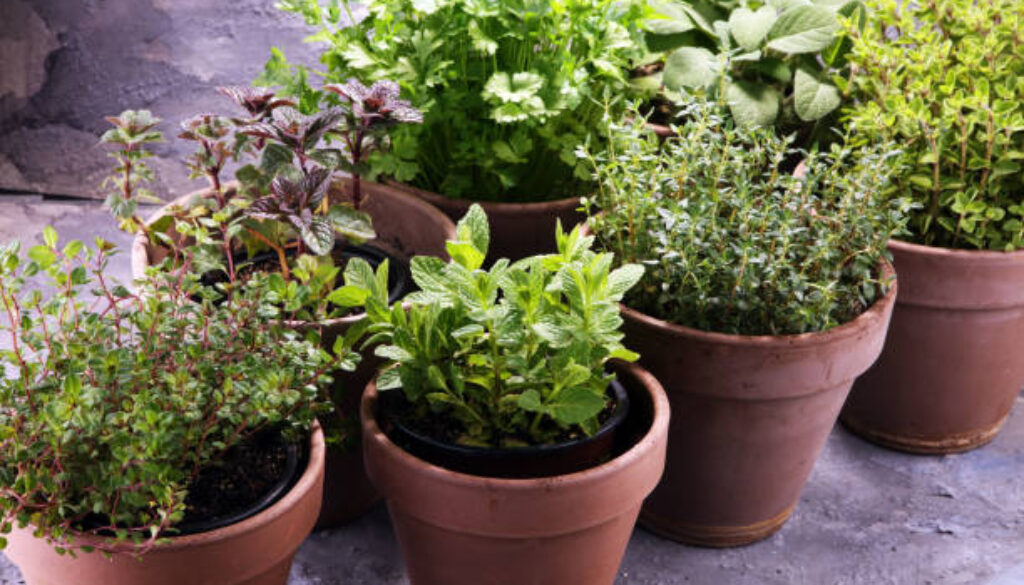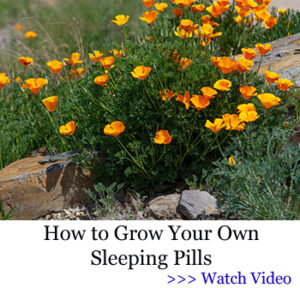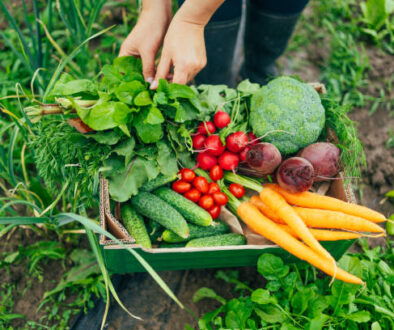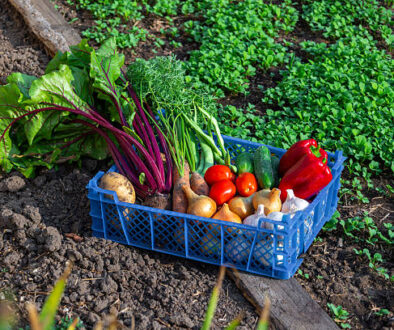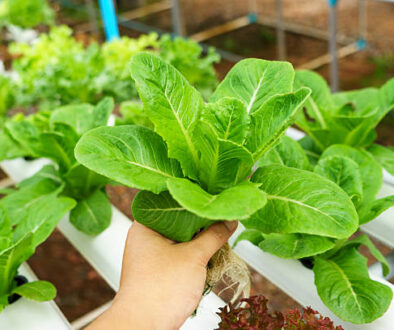Mistakes to Avoid When Growing a Medicinal Herb Garden
This post may contain paid and/or affiliate links. I may earn a small commission at no extra cost to you.
Starting a medicinal herb garden at home sounds exciting, but it’s easy to make mistakes that can slow down your progress.
Maybe you water too much, plant in the wrong spot, or forget how each herb grows best.
But you can avoid those setbacks with a little guidance.
Whether you’re planning a small healing herb garden on your balcony or a larger medicine garden in your backyard, knowing what not to do is just as important as knowing what to plant.
With the right care, your herbal medicine garden will thrive, giving you healthy, useful medicinal plants year-round.
Mistakes to Avoid When Growing a Medicinal Herb Garden
Planting Without a Plan
One of the biggest mistakes people make is rushing into planting without a plan.
It’s tempting to grab seeds or seedlings of every herb you’ve ever heard of, but not all medicinal plants thrive in the same conditions.
Some love full sun, while others wilt under the heat.
Ever tried growing mint and basil side by side? Mint spreads aggressively and often takes over, leaving basil struggling.
That’s why it’s smart to research the needs of each plant before you put them in the soil.
Start with a list of what you want to grow, then group plants that need similar care.
That way, your garden grows in harmony instead of chaos.
Related:
- The Main Benefits of Having a Medicine Garden in Your Backyard
- How to Start a Medical Garden at Home for Natural Healing (Step-by-Step) Guide For Beginners
- The Most Important Plants That Are Probably Missing From Your Backyard (Medicinal Plants)
Overwatering or Underwatering
Here’s a mistake almost everyone makes at some point: watering too much or too little.
Herbs like rosemary, thyme, and oregano prefer drier soil.
On the other hand, mint, parsley, and lemon balm enjoy more moisture.
If you water them all the same way, some will drown while others dry out.
The solution is simple: learn what each plant needs.
Stick your finger in the soil; if the top inch feels dry, it’s usually time to water.
Too much water suffocates roots, while too little leaves plants weak and stressed.
Balance is key, and once you get the hang of it, it becomes second nature.
Planting in the Wrong Location
Sunlight matters more than most beginners realize. Many medicinal herbs love at least six hours of sun each day.
Plant them in too much shade, and they’ll look pale, weak, and produce fewer leaves.
On the flip side, some herbs, like lemon balm or mint, actually prefer partial shade and can burn in direct sun.
So, what’s the fix? Spend a day observing your garden space. Notice where the sun hits in the morning and where shade falls in the afternoon.
Match herbs to the right spots based on their needs. A sunny balcony can be perfect for rosemary, while a shaded corner might suit mint just fine.
Ignoring Soil Quality
You can’t expect healthy plants if your soil is poor. A lot of beginners use plain garden soil that’s too heavy or drains poorly.
Medicinal plants need soil that drains well but still holds some moisture.
If your soil turns into mud after rain or hard clay in the sun, herbs won’t thrive.
Mix in compost, coconut coir, or perlite to improve texture and drainage.
A good soil mix not only keeps your plants healthy but also boosts their strength and medicinal qualities. After all, strong plants produce stronger remedies.
Growing Too Many at Once
Ever feel like you want to grow everything at the same time?
While enthusiasm is great, starting with too many plants at once often leads to overwhelm.
Each herb has its own needs, and trying to care for 15 different varieties right away can leave you frustrated.
Instead, keep it simple. Begin with three to five easy-to-grow herbs like mint, basil, chamomile, rosemary, or aloe vera.
Once you master those, add more over time. Growing a medicinal herb garden should feel rewarding, not stressful.
Forgetting to Harvest Regularly
Here’s a mistake that might surprise you: forgetting to harvest often enough.
Herbs actually grow better when you pick them regularly. Leaving plants untouched can cause them to flower too early, making their leaves bitter and less potent.
For example, basil tastes sweetest before it flowers. Snipping the tops often encourages bushier growth and keeps the flavor strong.
The same goes for mint and oregano—harvest little by little, and you’ll have a steady supply instead of one big, less flavorful batch.
Not Labeling Your Herbs
When you first plant seedlings, they all look pretty similar.
Without labels, it’s easy to confuse them—especially in the early stages.
Imagine mixing up your chamomile with your feverfew. That can create some awkward moments when you’re trying to brew a tea.
The solution is easy: use simple plant markers.
You don’t need anything fancy, popsicle sticks, stones with painted names, or even small tags work.
Labeling keeps you organized and ensures you always know exactly what you’re harvesting.
Overcrowding the Garden
It might feel efficient to plant herbs close together to save space, but overcrowding is a big mistake.
Herbs need air circulation to stay healthy. When they’re crammed, they compete for sunlight, nutrients, and water.
Even worse, crowded plants are more prone to diseases and pests.
Give each herb room to spread its roots and leaves.
Read the spacing instructions on seed packets or plant tags, and resist the urge to squeeze them in tighter.
It may look like empty space at first, but in a few weeks, you’ll be glad you left the room.
Using Chemical Fertilizers or Pesticides
The whole point of a healing herb garden is to grow natural, chemical-free remedies.
Yet many beginners reach for synthetic fertilizers or pesticides when their plants look weak or attract bugs. The problem?
Those chemicals can end up in your remedies, making them less safe and less effective.
Instead, go natural. Use compost, worm castings, or organic fertilizers to feed your plants.
For pests, try neem oil, garlic spray, or even introducing beneficial insects like ladybugs.
These natural methods keep your herbs strong while staying true to the purpose of your garden.
Forgetting to Research Medicinal Uses
Some people plant herbs without fully understanding how to use them.
They may end up with plants they never touch, simply because they don’t know their benefits.
For instance, you might grow calendula but not realize it’s amazing for skin healing.
Or you could have lemon balm but never use it to calm stress.
Before planting, learn what each herb does and how to prepare it. Make teas, salves, or simple tinctures to actually use your harvest. Otherwise, your garden becomes decoration instead of a tool for wellness.
Not Protecting Against Pests and Weather
Even hardy herbs can fall victim to pests or sudden weather changes.
Aphids, caterpillars, and fungal diseases can sneak in fast.
Likewise, heavy rain or unexpected frost can damage plants overnight.
To protect your garden, check plants regularly for pests. Remove bugs by hand or spray with natural solutions.
For weather, use covers, shade cloths, or move potted herbs indoors when needed.
Being proactive saves your hard work and keeps your garden thriving.
Skipping Regular Maintenance
Starting a medicinal herb garden is exciting, but keeping it alive requires consistency.
Some people forget to prune, weed, or fertilize, and the garden quickly loses its strength. Neglect can undo all your effort.
Set a routine, even if it’s just a few minutes a day. Water, check leaves, remove weeds, and trim herbs regularly.
A little daily attention makes a huge difference, and soon it becomes a relaxing habit rather than a chore.
Conclusion
Growing a medicinal herb garden at home is one of the most rewarding things you can do, but avoiding common mistakes makes all the difference.
From choosing the right location to proper watering, soil care, and harvesting, small details lead to big success.
Remember, it’s not about perfection—it’s about progress.
Start small, pay attention to your plants, and learn as you go.
Your garden will reward you with fresh remedies, peace of mind, and a deeper connection to nature.
FAQs
- What are the best medicinal herbs for beginners?
Start with easy options like mint, chamomile, basil, rosemary, and aloe vera. These grow quickly, don’t need much care, and are useful for many common remedies. - How much sunlight do medicinal herbs need?
Most medicinal herbs need at least six hours of sunlight daily. However, some like mint or lemon balm prefer partial shade. Always match the plant to the right spot. - How often should I harvest medicinal herbs?
Harvest regularly, even in small amounts. This encourages healthy growth and keeps the herbs flavorful and potent. Waiting too long can reduce quality. - Can I grow a medicinal herb garden indoors?
Yes! Many herbs thrive indoors if you give them enough sunlight or use grow lights. Just make sure pots have good drainage and place them near a sunny window.
